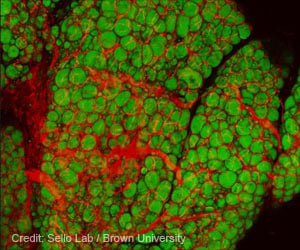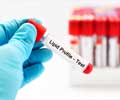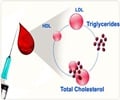Researchers at CNIC identified a mechanism in fat cells where caveolae, membrane structures, enable safe expansion to store excess energy, preventing metabolic damage.

Plasma membrane remodeling determines adipocyte expansion and mechanical adaptability
Go to source).
‘Caveolae are tiny membrane invaginations that absorb #stress during #fat_storage, enabling #adipocytes to expand without rupture. A key to metabolic health! #medindia’





Furthermore, this discovery paves the way for the development of new treatment strategies to address serious metabolic and cardiovascular issues associated with conditions such as metabolic syndrome, overweight, obesity, and lipodystrophy, which are linked to chronic energy excess.Adipose tissue is a major factor in determining metabolic health in contemporary civilizations that are marked by sedentary lifestyles and high-calorie meals.
Adipocytes can proliferate to store energy as fat, which keeps extra lipids from building up in organs like the liver or in blood artery walls (particularly in the heart and brain), where they could harm the body irreversibly.
However, there are some risks involved in this process. Adipocytes that are overloaded with fat may burst, releasing their poisonous contents and causing inflammation and changes in metabolism.
The CNIC study investigated how adipocytes adjust to endure the mechanical stress brought on by their expansion to make room for extra fat.
Advertisement
Caveolae: The Guardians of Fat Cells
The team analyzed the role of caveolae, small invaginations in the cell membrane that act as sensors and shock absorbers of these stresses. “When an adipocyte accumulates fat and its surface is under increased tensile stress, the caveolae flatten, releasing a ‘reservoir’ of a membrane that allows the cell to enlarge without breaking apart. Conversely, when fat reserves diminish, these structures regroup to reduce the excess membrane and restore cellular stability,” explained study first author Dr María Aboy Pardal.As well as physically protecting adipocytes, caveolae also play an essential role in coordinating cell metabolism.
However, when these structures are absent or malfunctioning, adipocytes become more rigid, vulnerable to rupture, and less efficient at storing energy.
The result added Aboy Pardal, “is an inflammatory reaction that compromises the body’s metabolic health. This phenomenon is linked to conditions such as lipodystrophy, in which the body cannot store fat, leading to severe metabolic and cardiovascular alterations.”
The CNIC study highlights the key role of the caveolae protein caveolin-1 (Cav-1). For caveolae to flatten correctly in response to fluctuations in mechanical tension in the cell membrane, Cav-1 needs to be chemically altered by the addition of a phosphoryl group to a specific amino acid, a process called phosphorylation.
For the study, the researchers developed a transgenic mouse that expresses a genetically altered version of Cav-1 that cannot be phosphorylated. This renders adipocytes unable to expand correctly in response to the mechanical tension generated by the accumulation of lipids, severely limiting their capacity to store energy and maintain cellular integrity.
The failure of this simple mechanism ultimately leads to lipodystrophy and its severe consequences.
Del Pozo Barriuso concluded that “these results give us a better understanding of how adipose tissue responds to the mechanical forces associated with energetic excess. In the context of obesity and metabolic syndrome, this protective mechanism is essential for minimizing organismal damage.”
Reference:
- Plasma membrane remodelling determines adipocyte expansion and mechanical adaptability- (https:www.nature.com/articles/s41467-024-54224-y)
Source-Eurekalert















